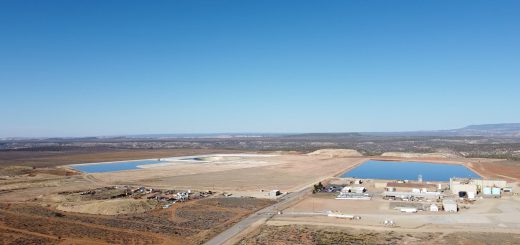Toshiba-Tenex Enriched Uranium Joint Venture: Japan-Russia Bilateral Nuclear Cooperation Agreement Nuke Info Tokyo No. 141
On February 9 Toshiba announced that it had agreed to start discussions on establishing a joint venture for enriched uranium sales with Russian company Tenex. Tenex (Techsnabexport) is a subsidiary of Russia’s Atomenergoprom (AEP), which supervises Russia’s civilian nuclear power generation businesses and is a part of state nuclear corporation Rosatom.
Toshiba and Tenex are involved in continuing discussions on possible cooperation in the nuclear fuel business under a May 2009 memorandum of understanding. Toshiba says that the purpose of the joint venture is to “draw on the complementary capabilities of the companies: Tenex’s supply of enriched uranium and Toshiba Group’s nuclear fuel supply chain.”
Before its memorandum of understanding with Tenex, Toshiba and AEP signed a general framework agreement in March 2008 on the possibility of partnerships in fields including the front-end civilian nuclear fuel-cycle business, construction of commercial nuclear power plants and the manufacturing and maintenance of large equipment. In its February 9, 2011 press release Toshiba said that it and AEP “continue to discuss possible collaboration.”
Besides the proposed uranium enrichment joint venture with Tenex, Toshiba has also invested in a uranium enrichment project in the United States. In September 2010 it invested in USEC’s American Centrifuge Plant as the first phase of a partnership agreement announced in May 2010. With these and other investments, Toshiba is attempting to connect the links in the front end of the nuclear fuel chain – uranium mining, enrichment and fuel fabrication – to ensure that it can guarantee a secure supply of fuel for nuclear power plants that it hopes to build around the world.
Bilateral Nuclear Cooperation Agreement
Meanwhile, the Japanese Government is preparing to submit a nuclear cooperation agreement between Japan and Russia to the Diet for approval. The Japanese and Russian Governments signed the agreement on May 12, 2009 when Prime Minister Vladimir Putin was in Japan. It was endorsed by the Russian Duma on December 22, 2010 and by the Federation Council on December 24, but submission to the Japanese Diet was delayed because none of Russia’s nuclear facilities were subject to International Atomic Energy Agency (IAEA) safeguards. This problem has not been solved, but the Japanese Government is now preparing to use a loophole to enable ratification.
The Japanese Government accepts the dubious principle that because Russia is a nuclear weapons state it does not have to place all its nuclear facilities (not even all its so-called “civilian facilities”) under IAEA safeguards. The bilateral agreement only requires that the IAEA must have selected at least one Russian facility for the application of safeguards. Japanese nuclear material, equipment and technology may be used in unsafeguarded facilities.
On December 13 the “first full-scale IAEA inspection” was carried out at a “storage facility” within the International Uranium Enrichment Center (IUEC)1, located on the Angarsk Electrolytic Chemical Combine in Siberia. Although the scope of the safeguards is not public, it appears that this storage facility refers only to a Low-Enriched Uranium (LEU) Reserve that Russia set up within the IUEC under an agreement with the IAEA signed in March 29, 2010. The purpose of the LEU Reserve is ostensibly to provide a backup supply for countries experiencing a disruption in the supply of LEU that is not related to technical or commercial considerations. Setting aside the impracticality of this “guarantee”, the LEU Reserve has no connection whatsoever with nuclear cooperation between Japan and Russia. Nevertheless, the existence of this single facility under IAEA safeguards is being used as an excuse by the Japanese Government to proceed with ratification of the bilateral agreement. The prime reason for the rush to ratify is that Toshiba wants to clear the way for nuclear cooperation with Russia.
In response to inquiries by CNIC, the Ministry of Foreign Affairs (MoFA) said ratification of the bilateral agreement should not be confused with approval of specific cooperation. No doubt the MoFA is encouraging Russia to place under IAEA safeguards facilities that could potentially be involved in nuclear cooperation between the two countries. In itself that is laudable, but it misses the fundamental point that no nuclear cooperation agreement should be ratified which permits Japanese nuclear material, equipment and technology to be transferred to unsafeguarded facilities.
Philip White (CNIC)
1. IUEC is jointly owned by Rosatom (80%), Kazatomprom (10%) and Ukraine’s Nuclear Fuel holding (10%).


